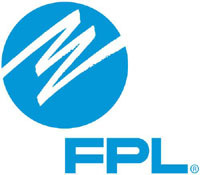FPL proposes plan to recover costs of increased fuel prices and hurricane responses
Florida Power & Light Company filed a proposal with the Florida Public Service Commission on January 23, 2023, to adjust rates to recover costs related to two hurricanes and natural gas price volatility. The proposal suggests spreading unrecovered fuel costs from 2022 over 21 months and recovery of storm costs over 12 months. Despite a projected increase of approximately 10% for a typical 1,000-kWh residential bill from April 2023, the bill would remain below the national average. The plan aims to mitigate the impact of these costs while ensuring customer bills stay manageable amid fluctuating energy costs.
- FPL plans to minimize the impact of unrecovered fuel and storm costs on customer bills.
- Proposed typical residential bills will still be below the national average and competitive within Florida.
- FPL continues to invest in energy efficiency, maintaining low customer costs over time.
- Proposed increase of approximately 10% in residential bills starting April 2023.
- Weather-related restoration costs of $1.3 billion from hurricanes Ian and Nicole being recouped via temporary surcharges.
- Two hurricanes and natural gas price increases expected to impact customer bills
- Fuel bills from 2022 already paid by FPL but not yet recovered would be spread over 21 months while lower projected fuel costs for 2023 would provide a partial offset
- Cost recovery for Hurricanes Ian and
Nicole would be spread over a 12-month period - Typical 1,000-kWh residential bill would remain below national average after the proposed changes
The plan, which must be approved by the PSC, seeks to balance unrecovered fuel and storm costs from 2022 and a recent decline in projected 2023 fuel costs to minimize the impact on customer bills.
FPL Proposal for Fuel and Storm Costs Effective | |||
Item | Description | Duration on Bill | Bill Impact |
2022 Fuel Under-recovery | 2022 natural gas prices higher | 21 months | Expected |
2022 Storm Costs | Incremental restoration costs from | 12 months | Expected |
2023 Fuel Over-recovery | 2023 natural gas prices expected | 9 months | Expected |
"FPL has a proven track record of keeping bills below the national average. When events beyond our control – like hurricanes and significant changes in fuel prices – force a change to customer bills, we try to do so in a thoughtful way that minimizes the impact on our customers while balancing the risk of invoices piling up," said FPL Chairman and CEO
If the proposal is approved, FPL's typical 1,000-kWh residential bill for customers in peninsular
FPL typical 1,000-kWh residential customer bill | ||||
FPL | FPL Northwest | |||
(proposed) | % Increase* | (proposed) | % Increase* | |
~ | ~ | |||
*As compared to rates effective beginning Feb. 1, 2023 | ||||
Rapid responses to restore power after Ian and rare November hurricane
Under PSC rules, FPL and other utilities are responsible for restoring power and paying bills upfront after a hurricane strikes. Utilities then recover their restoration costs through a surcharge on customer bills, subject to PSC review and approval of expenses incurred. In this case, FPL is seeking recovery of
FPL's investments in hardening the energy grid since the destructive 2004-05 hurricane seasons helped speed restoration times and likely reduced total restoration costs for Ian and
As part of today's filing, FPL also responded to the PSC's request to calculate the impact of spreading the remaining costs from past hurricanes that affected customers of the former Gulf Power across all FPL customer bills. Doing so would reduce the monthly storm charge on a typical 1,000-kWh bill in
Volatility in price of natural gas
FPL is also seeking permission to recover about
Even with the volatility in the natural gas market and sharp increases experienced in 2022, natural gas remains far more cost-effective than fuel oil and coal to generate electricity. FPL's decision in the early 2000s to seek energy independence and modernize its generating fleet by moving away from foreign oil and constructing ultra fuel-efficient clean energy centers and leading America's largest solar expansion has saved customers more than
FPL offers energy-saving tips to customers
With the bill increase proposed to take effect in
- Depending on the season, customers should cool their home at 78°or warmer or heat their home at 68° or cooler. Each degree customers lower or increase the temperature on their thermostat can reduce their bill by
5% a month for heating or cooling costs. - Customers can clean the lint filter in their dryer before each load to minimize drying time.
- Turn off ceiling fans and lights in unoccupied rooms.
- View daily, weekly and monthly energy use by using the FPL Mobile App, which is available on the Apple App store,
Google Play or by texting "App" to MyFPL (69375). - Customers can activate the free FPL Energy Manager tool to monitor how their home is using energy and identify ways to save.
- For more helpful tips, customers can visit FPL.com/waystosave.
As America's largest electric utility,
![]() View original content to download multimedia:https://www.prnewswire.com/news-releases/fpl-proposes-plan-to-recover-costs-of-increased-fuel-prices-and-hurricane-responses-301728092.html
View original content to download multimedia:https://www.prnewswire.com/news-releases/fpl-proposes-plan-to-recover-costs-of-increased-fuel-prices-and-hurricane-responses-301728092.html
SOURCE
FAQ
What is FPL's proposal for customer rate adjustments?
When will the proposed rate increase for FPL customers take effect?
By how much will typical residential bills increase under FPL's proposal?
How does the proposed FPL rate compare to the national average?







